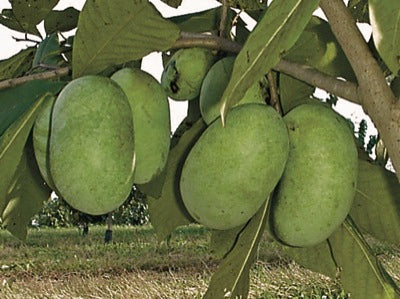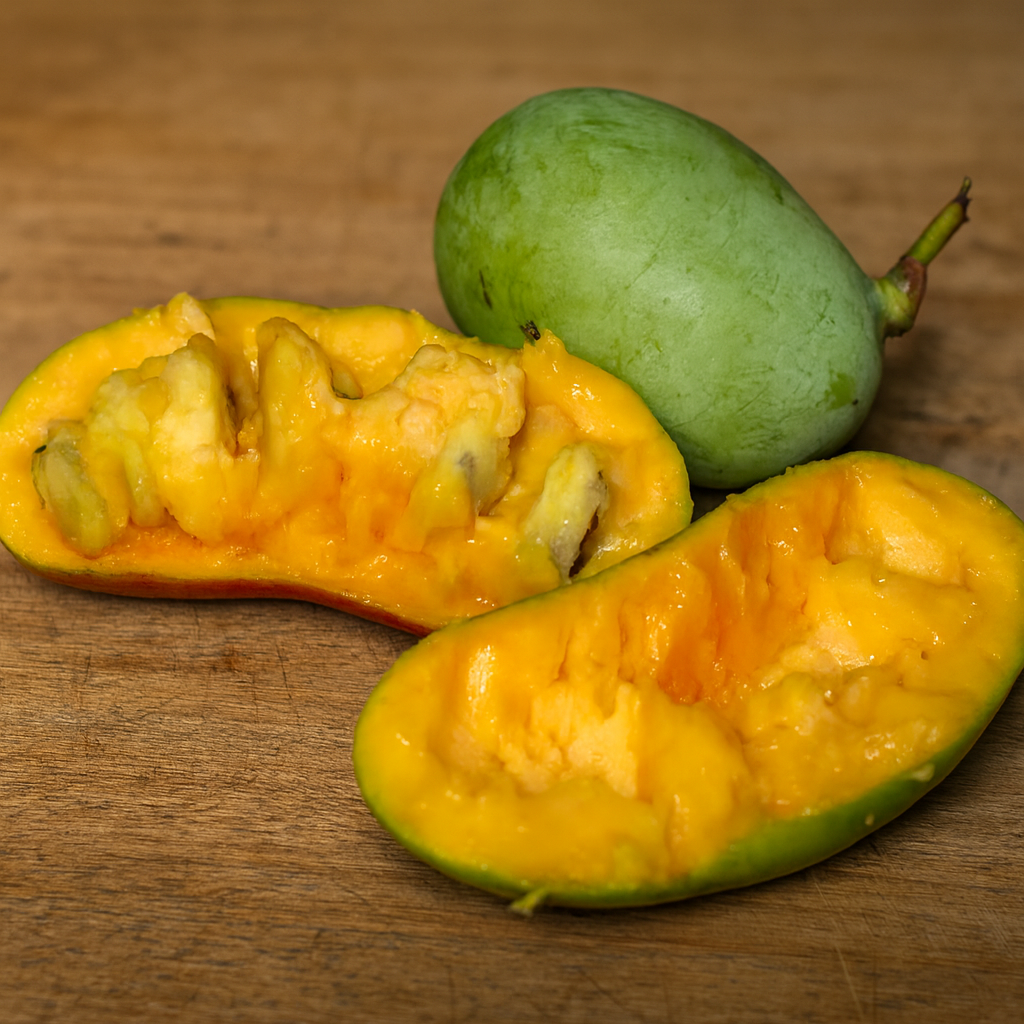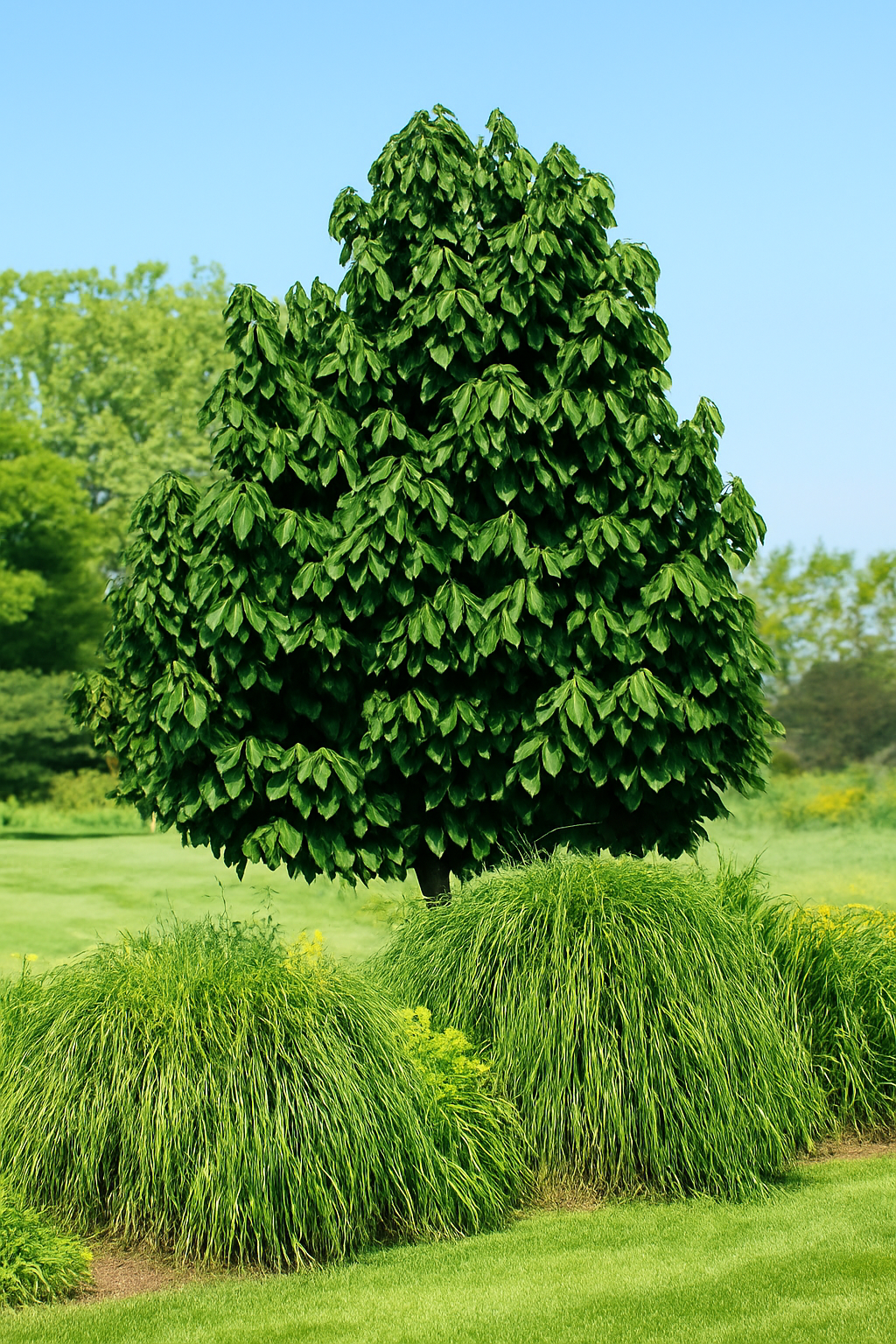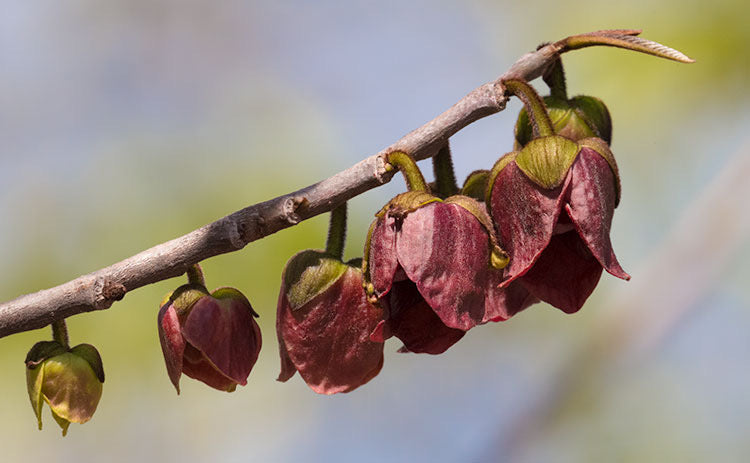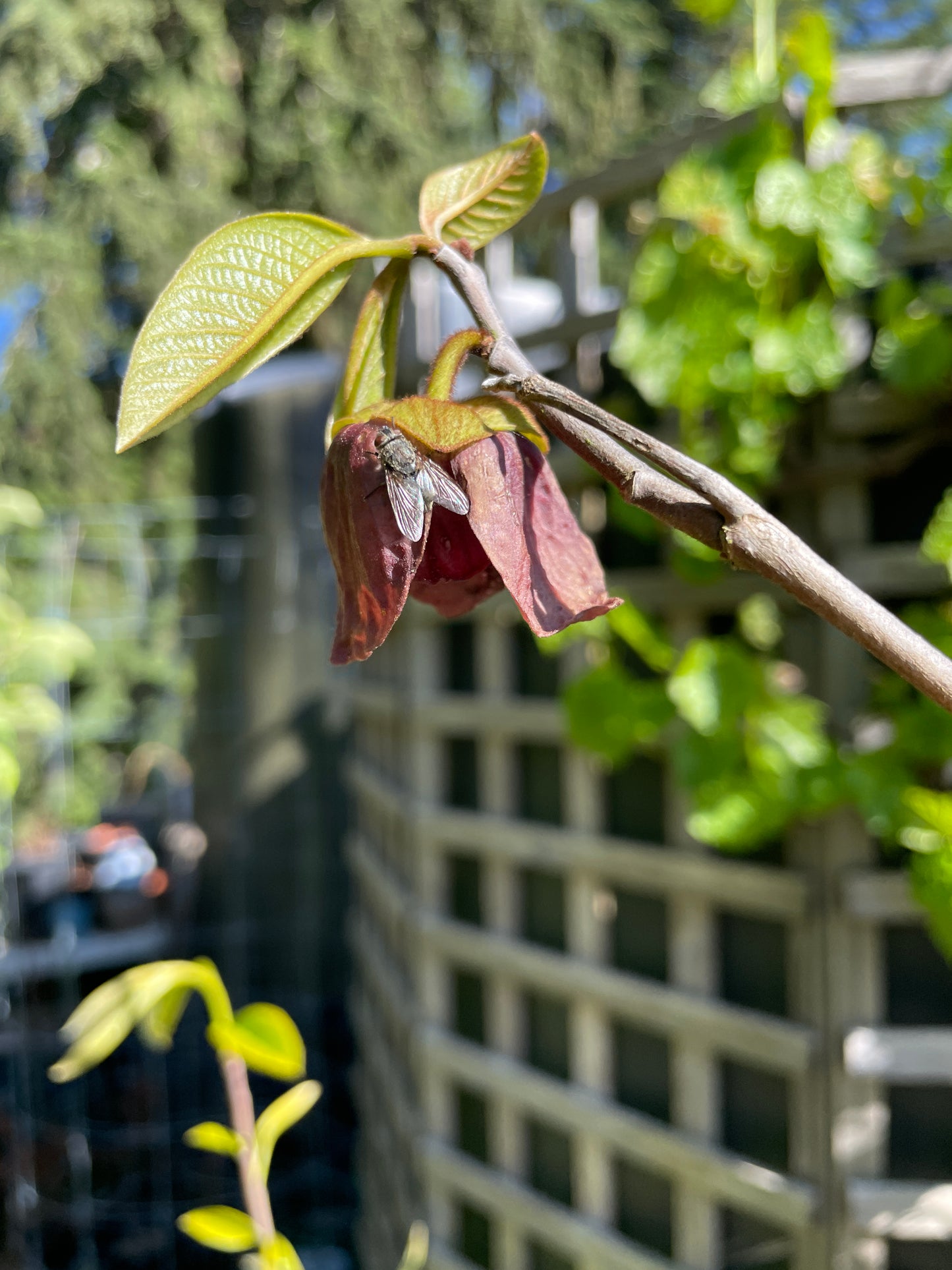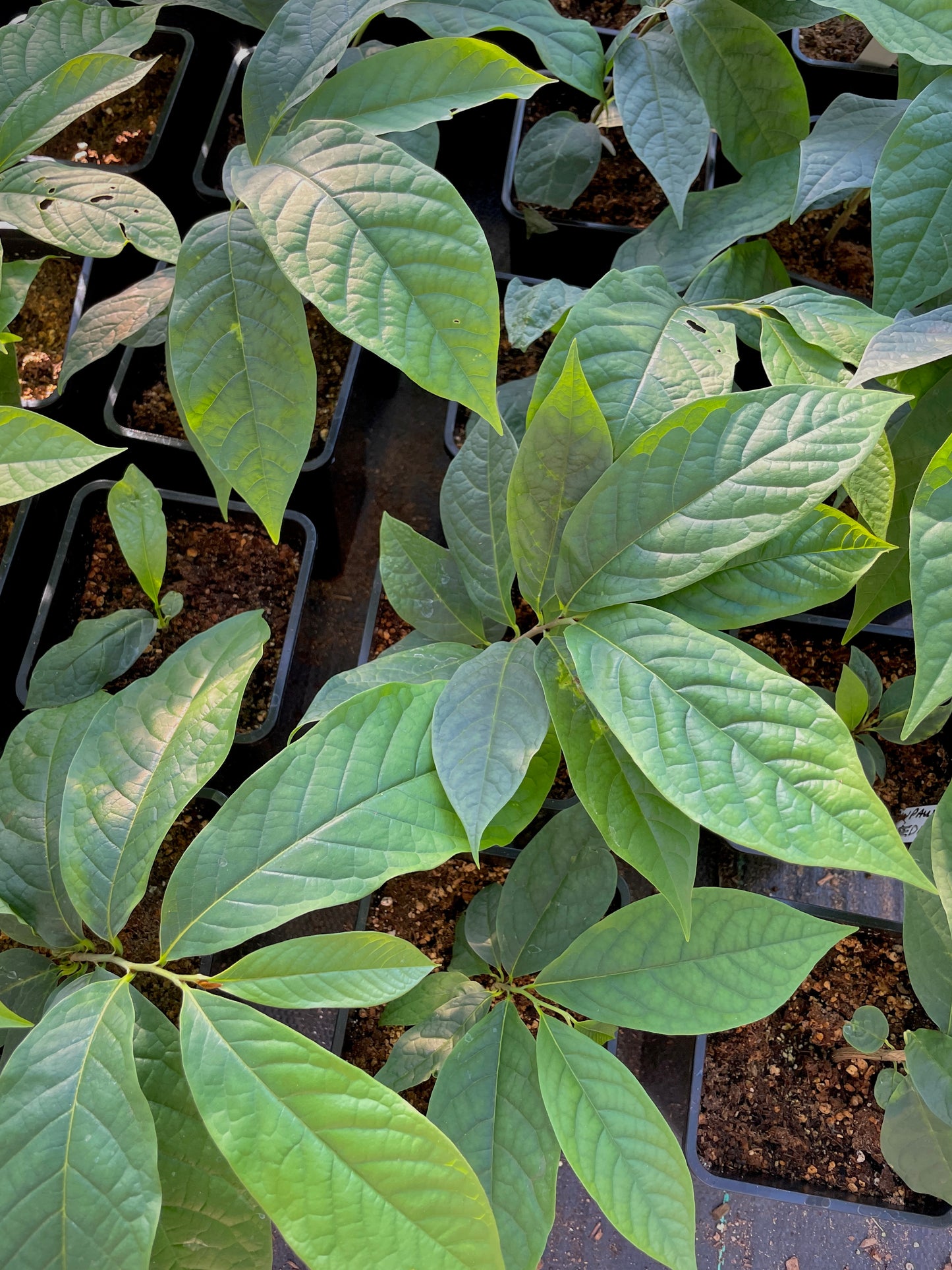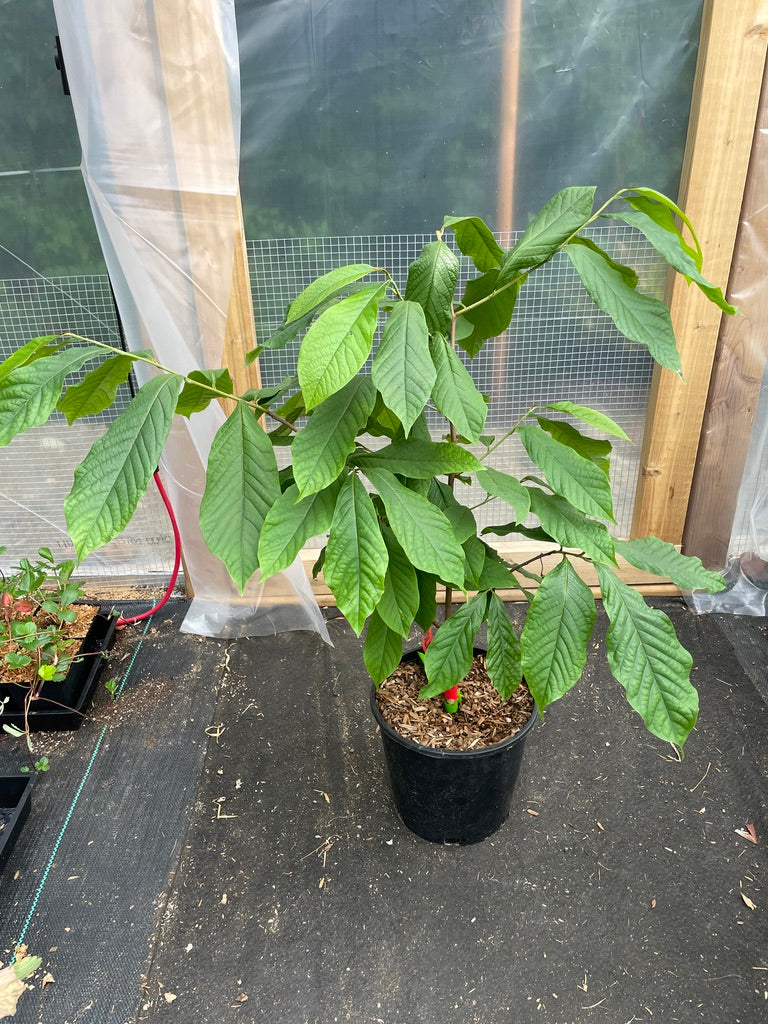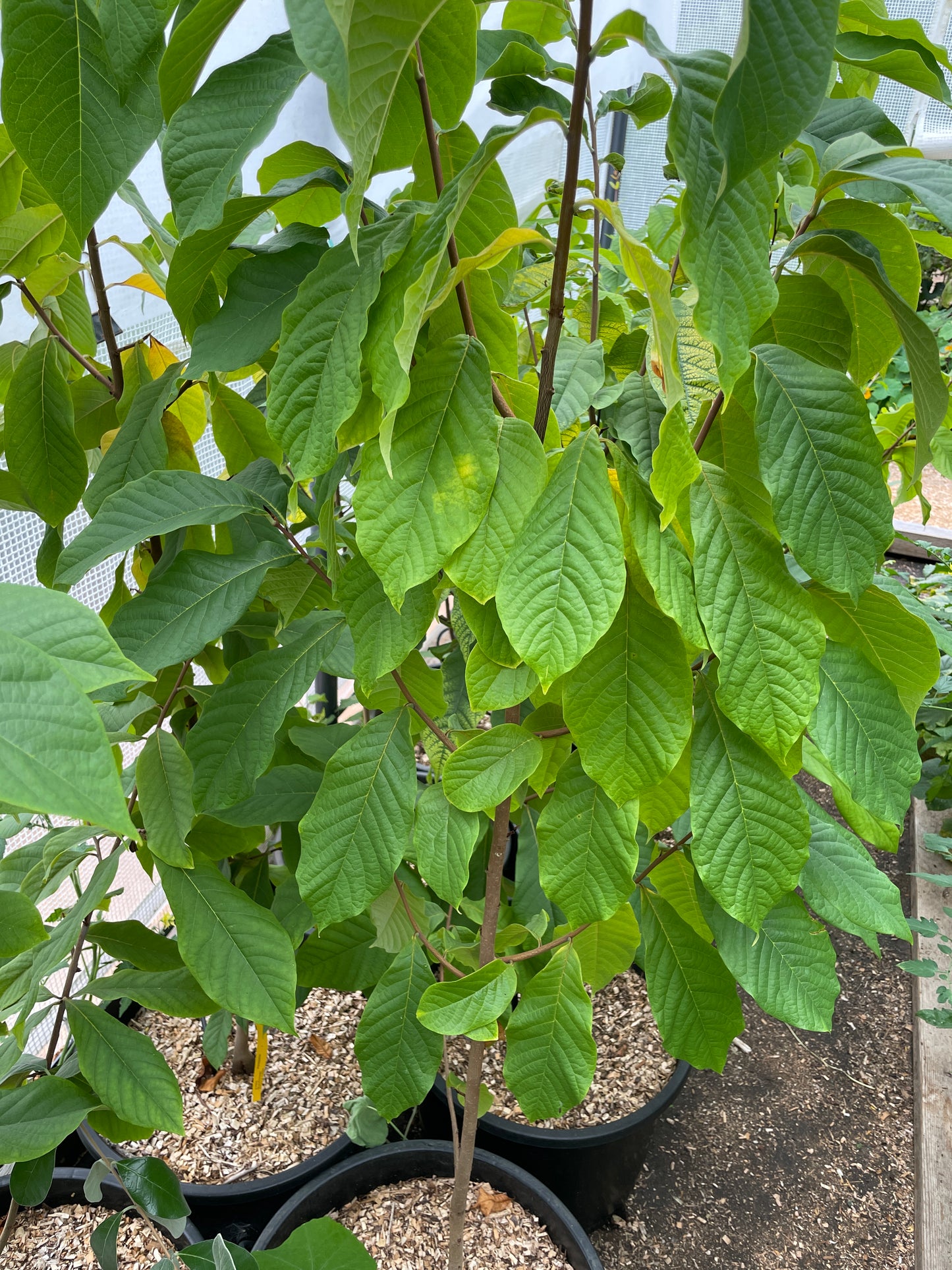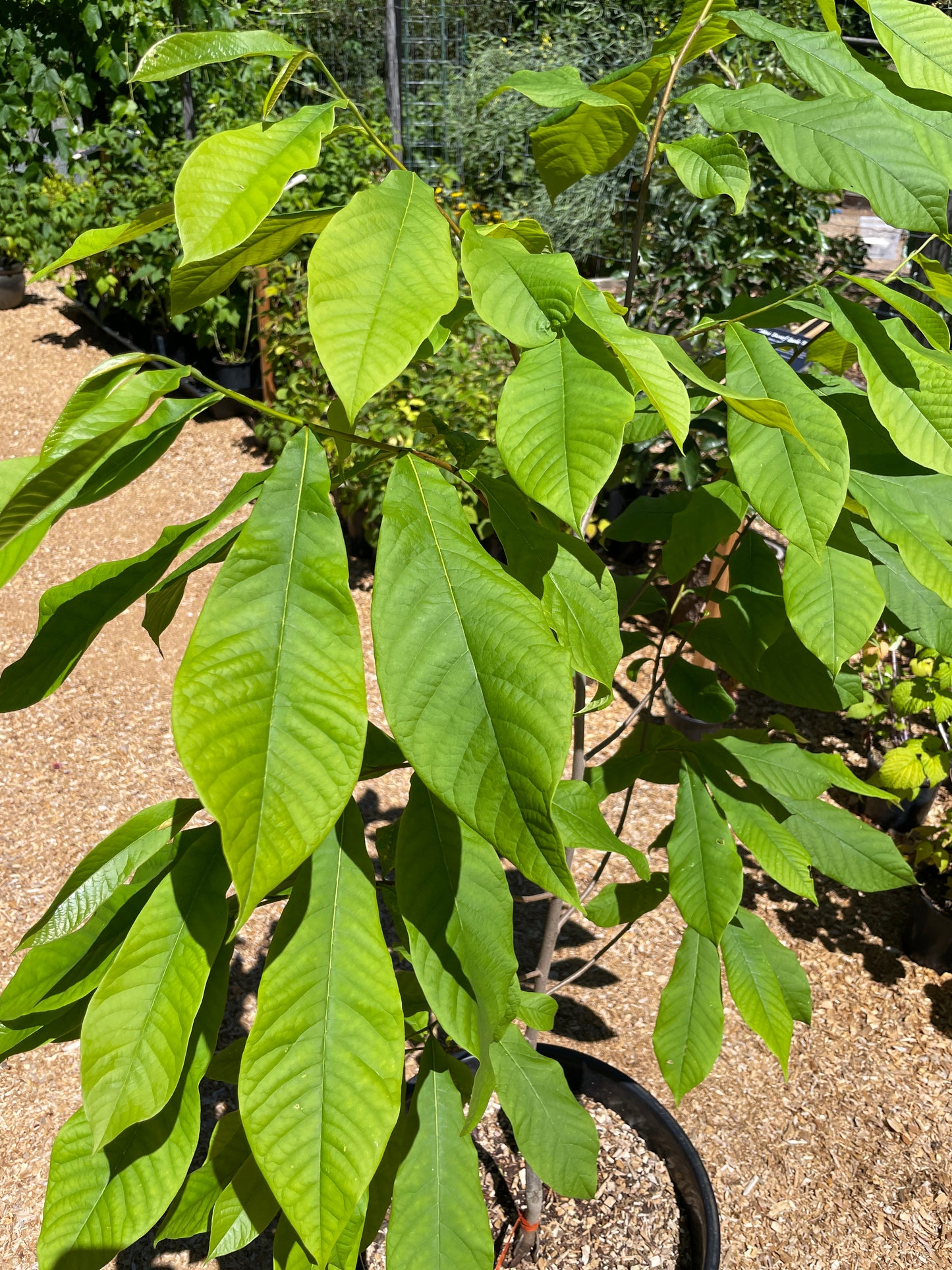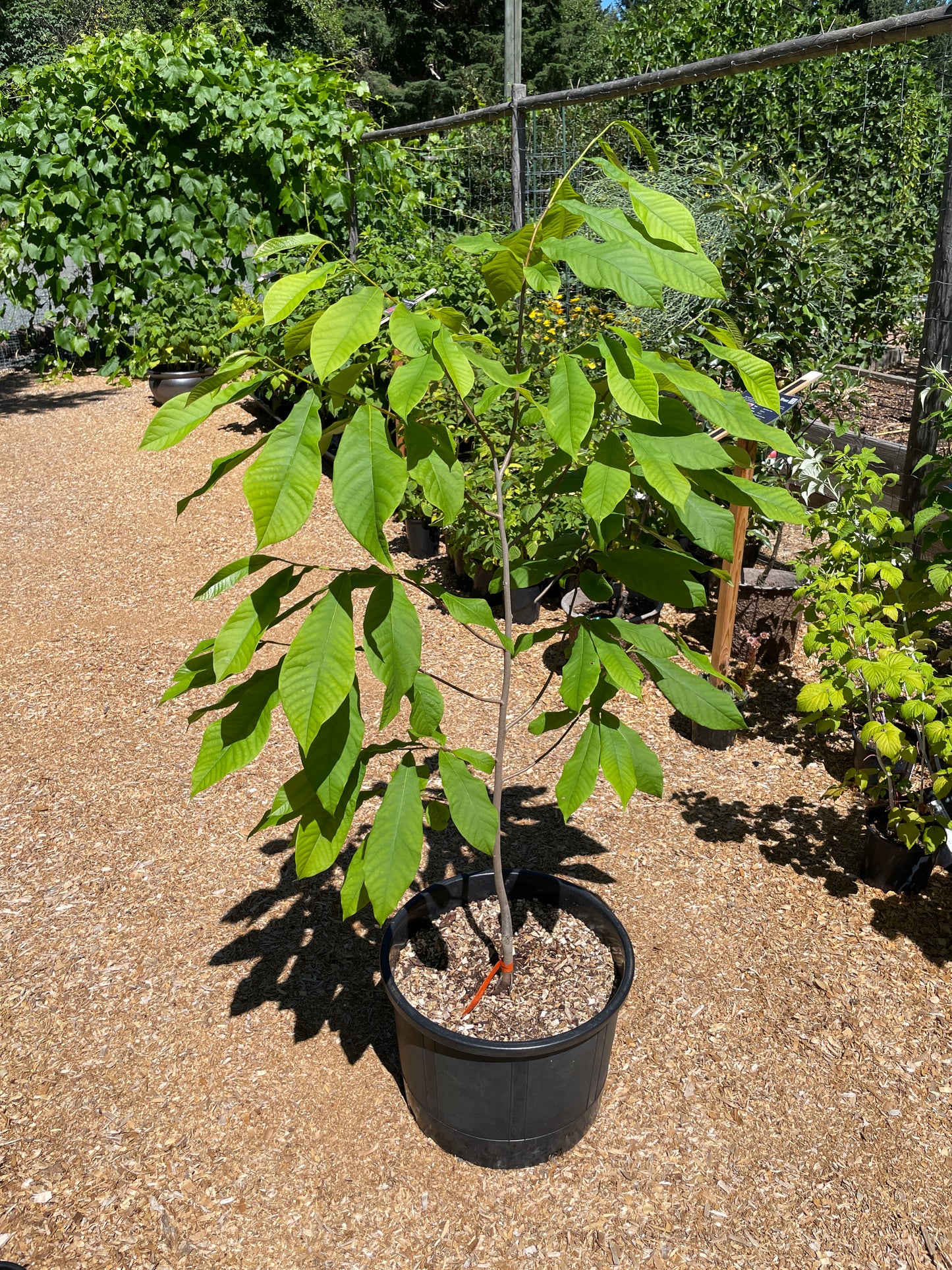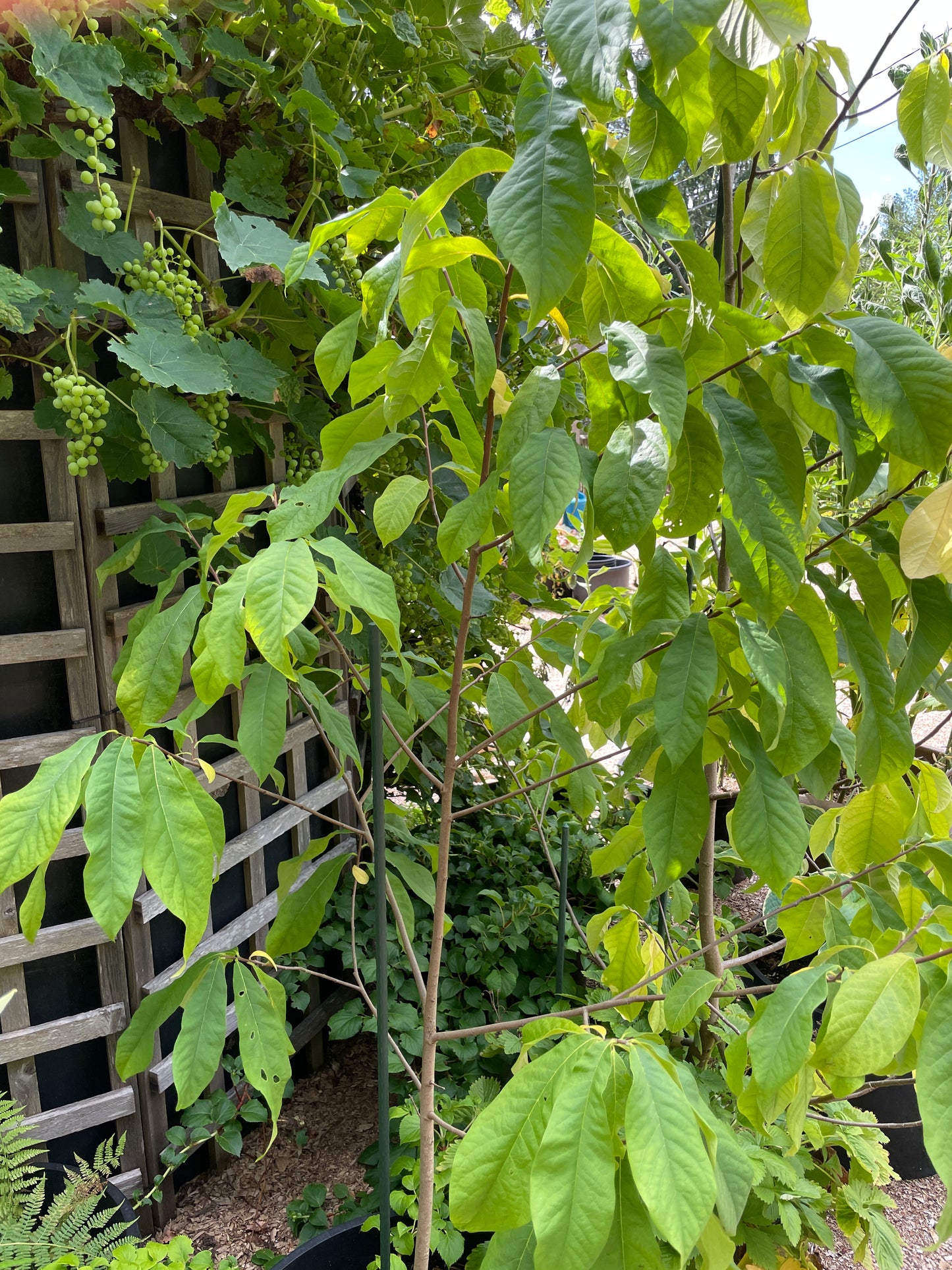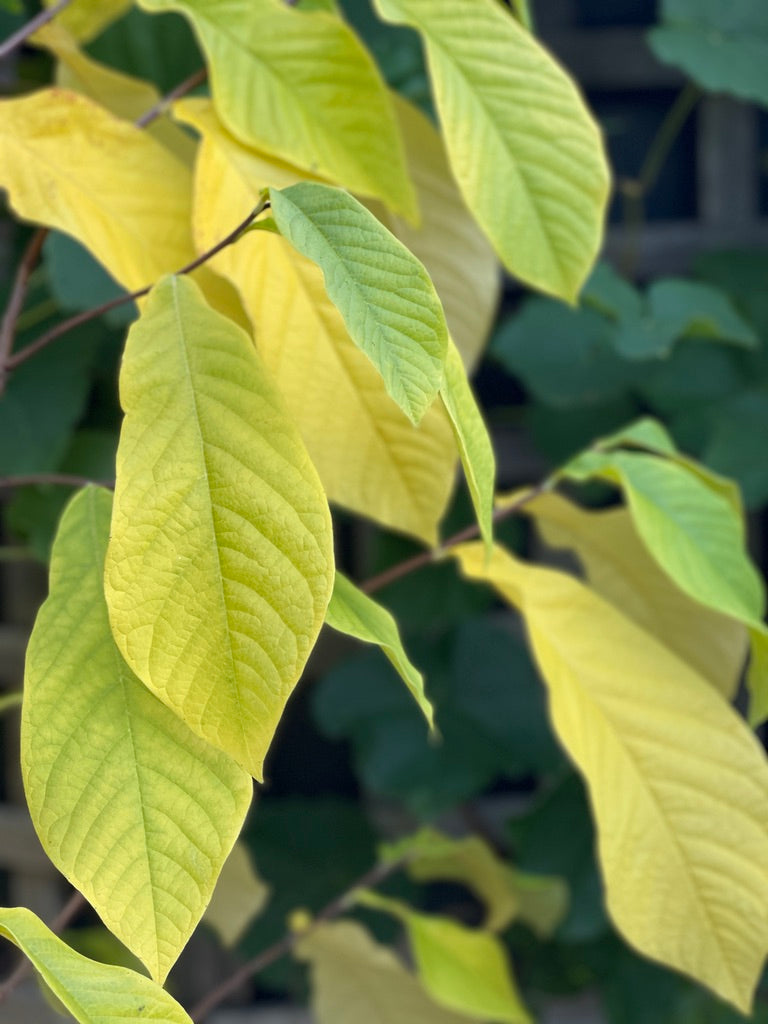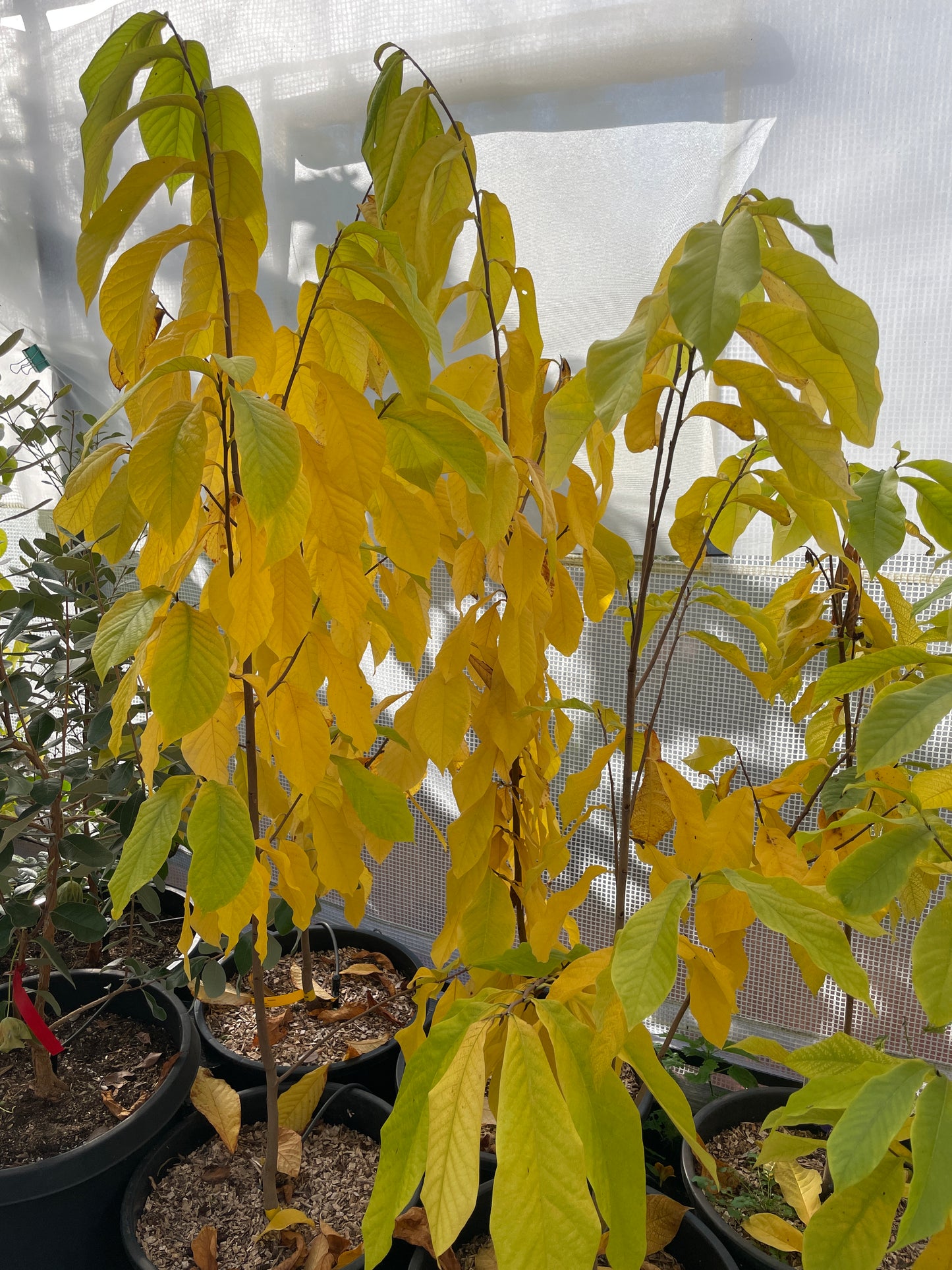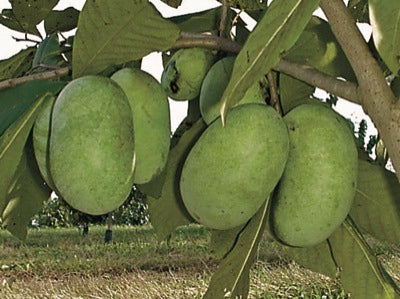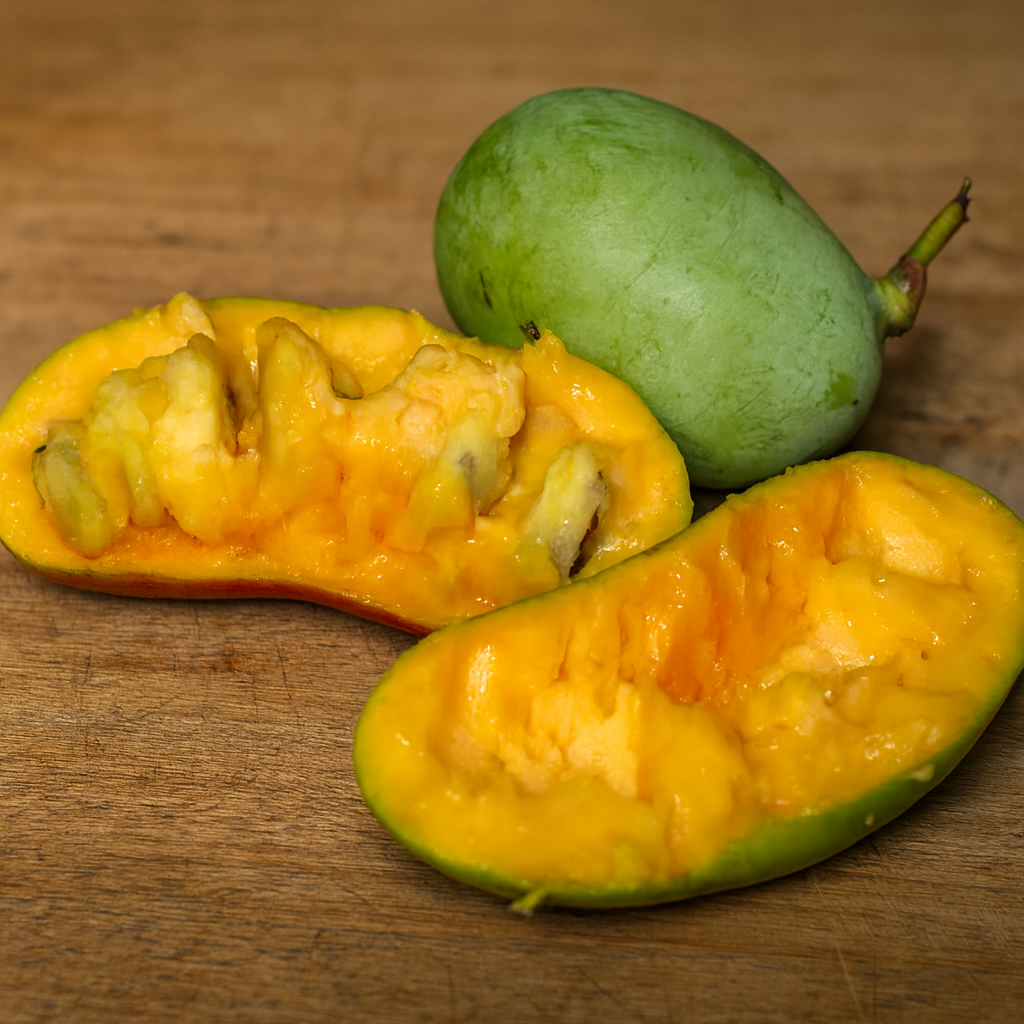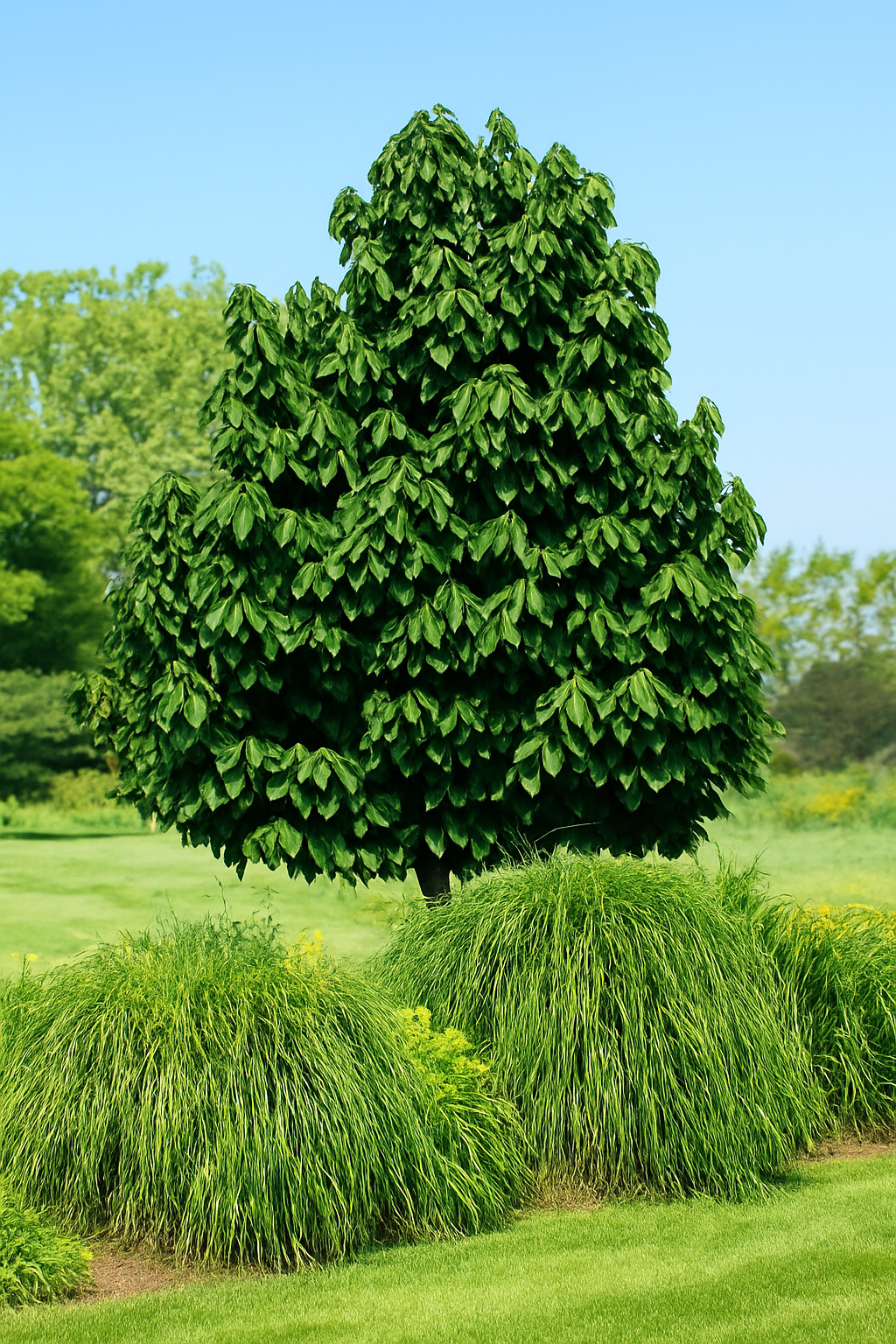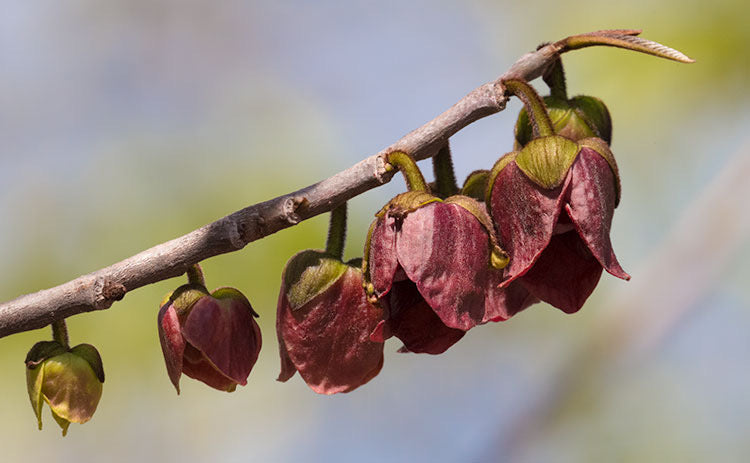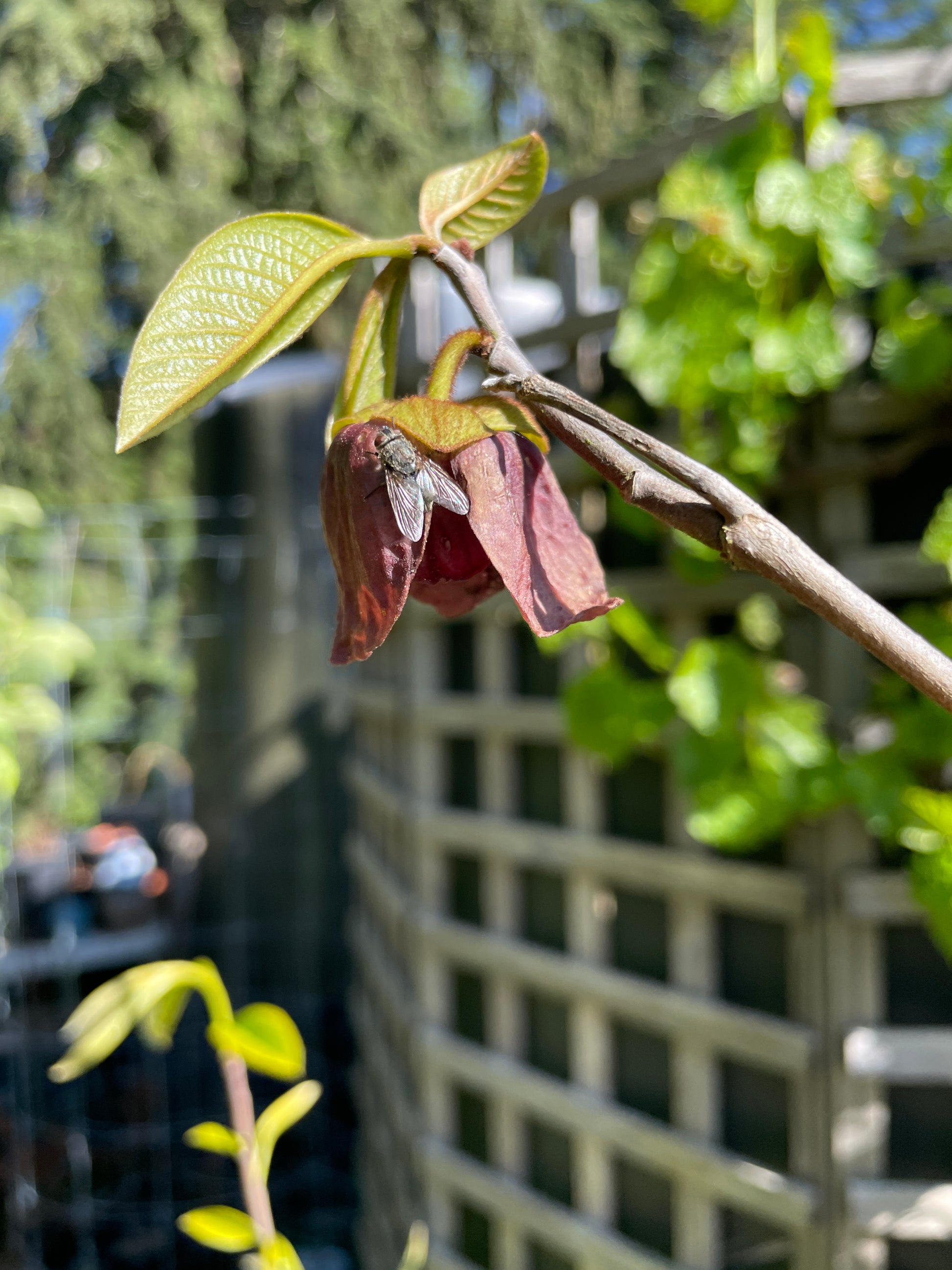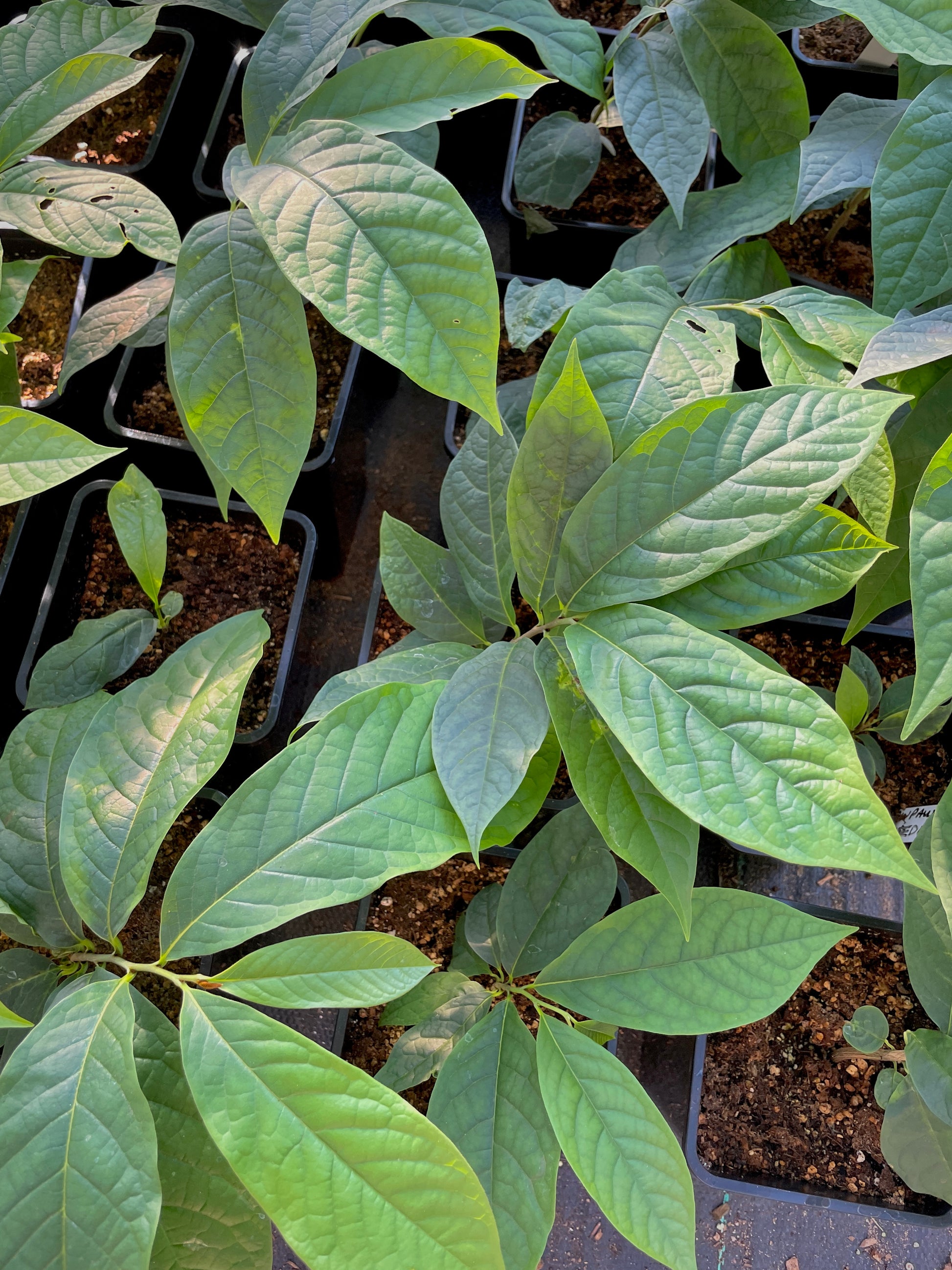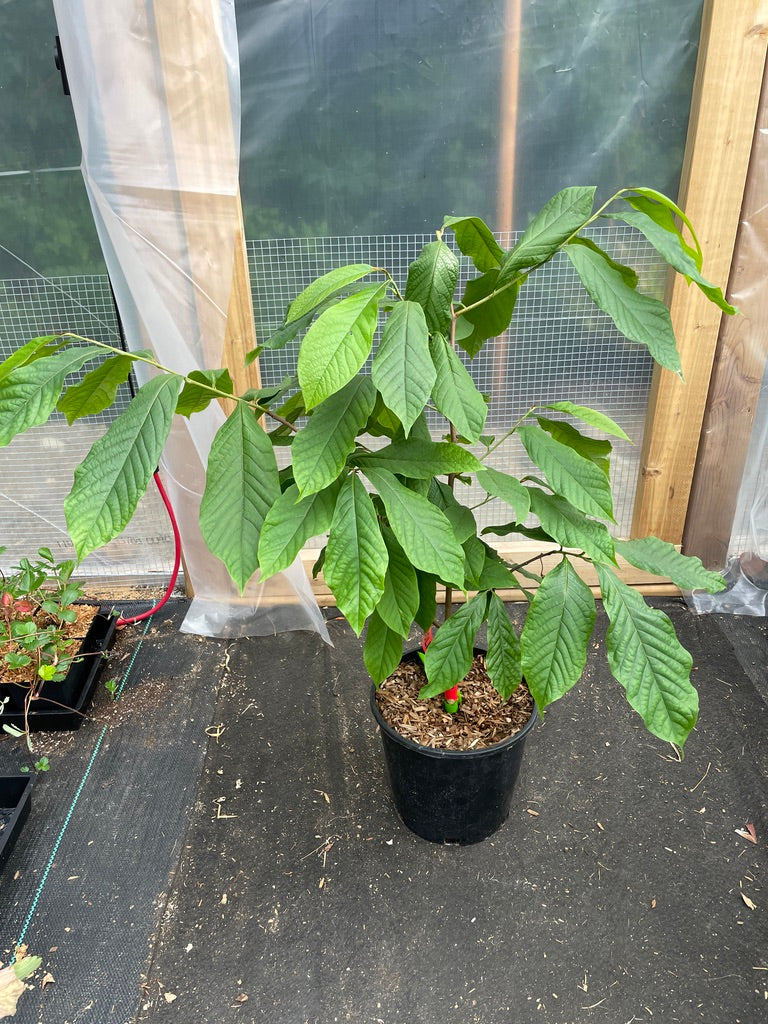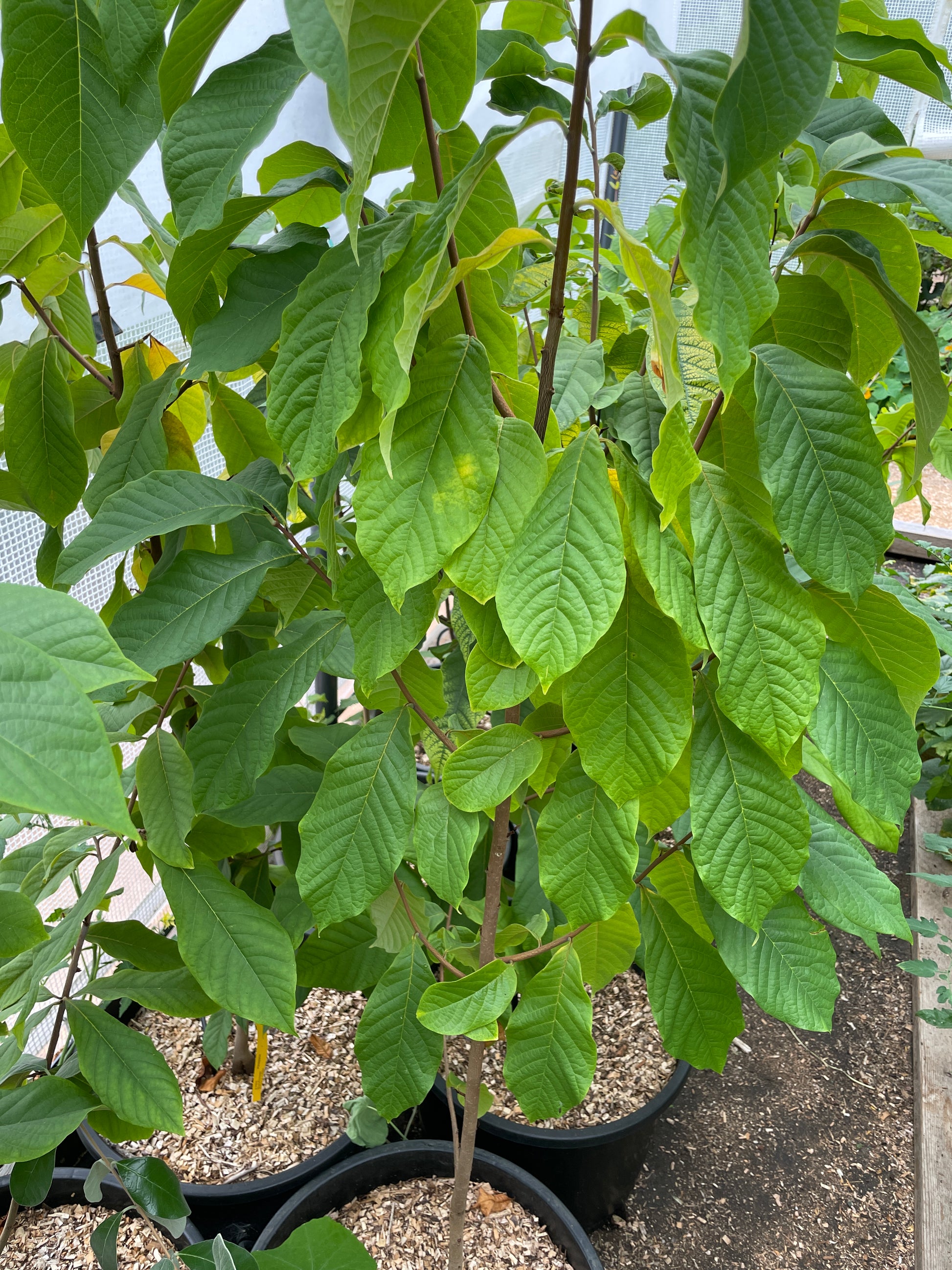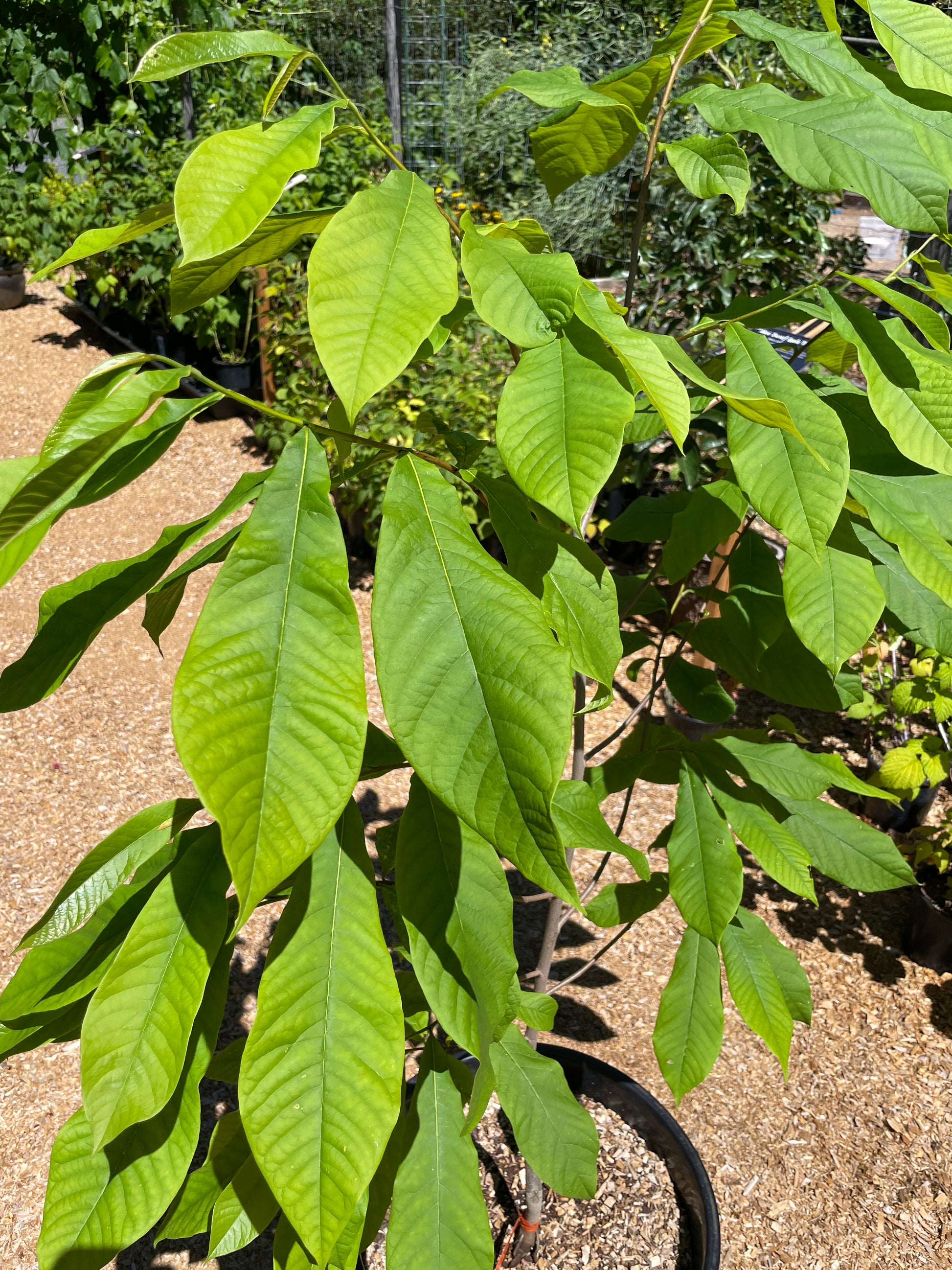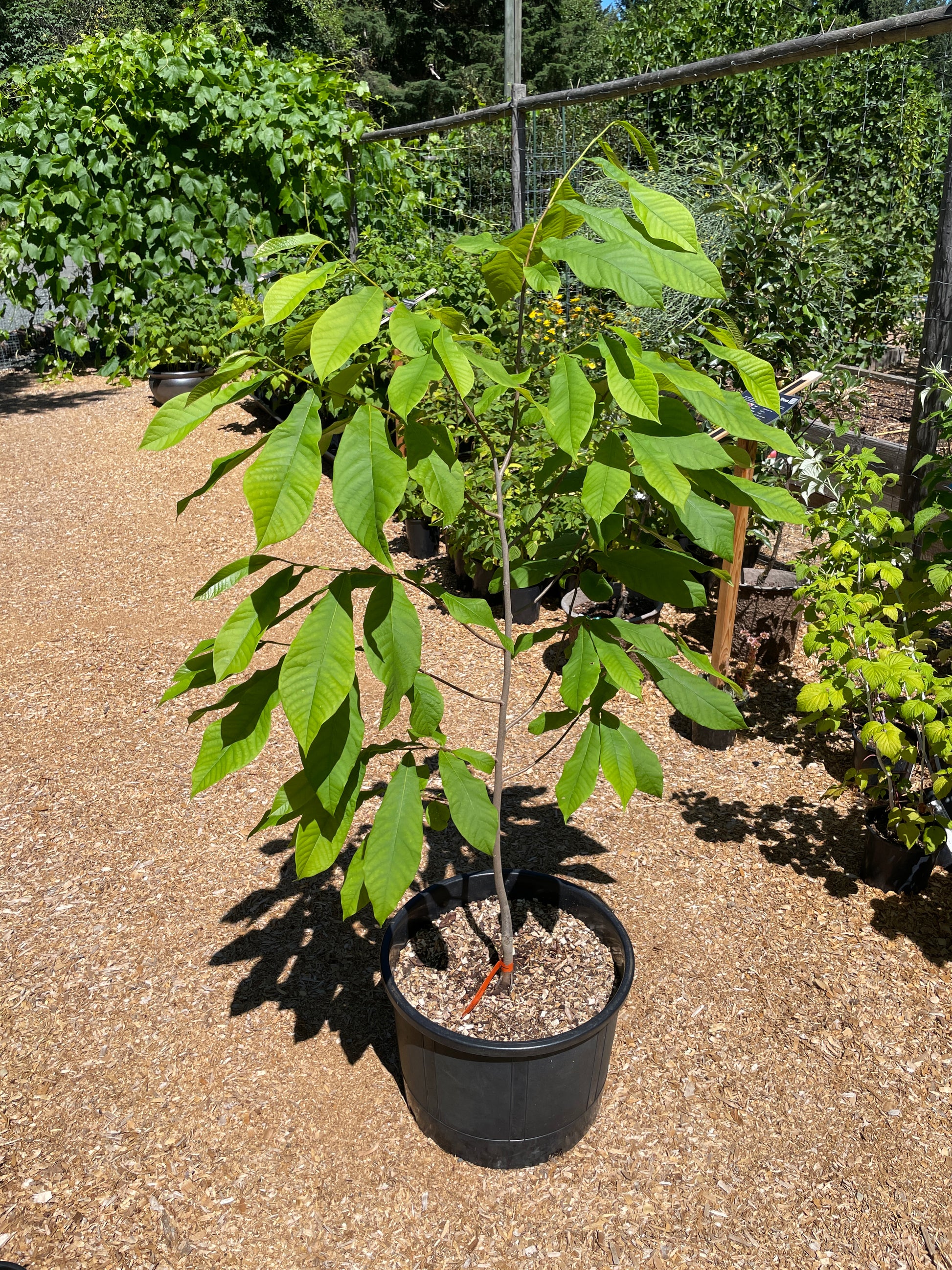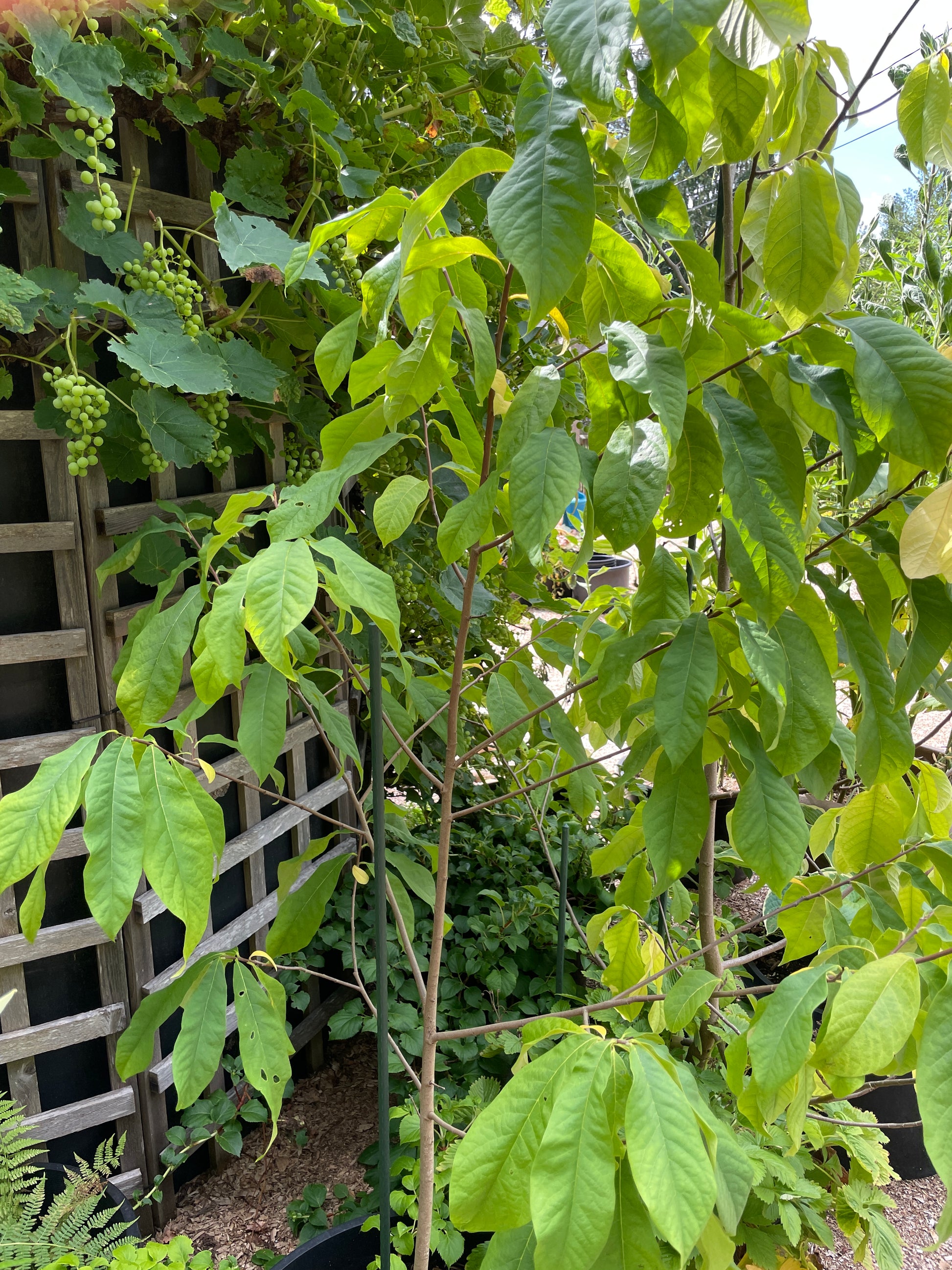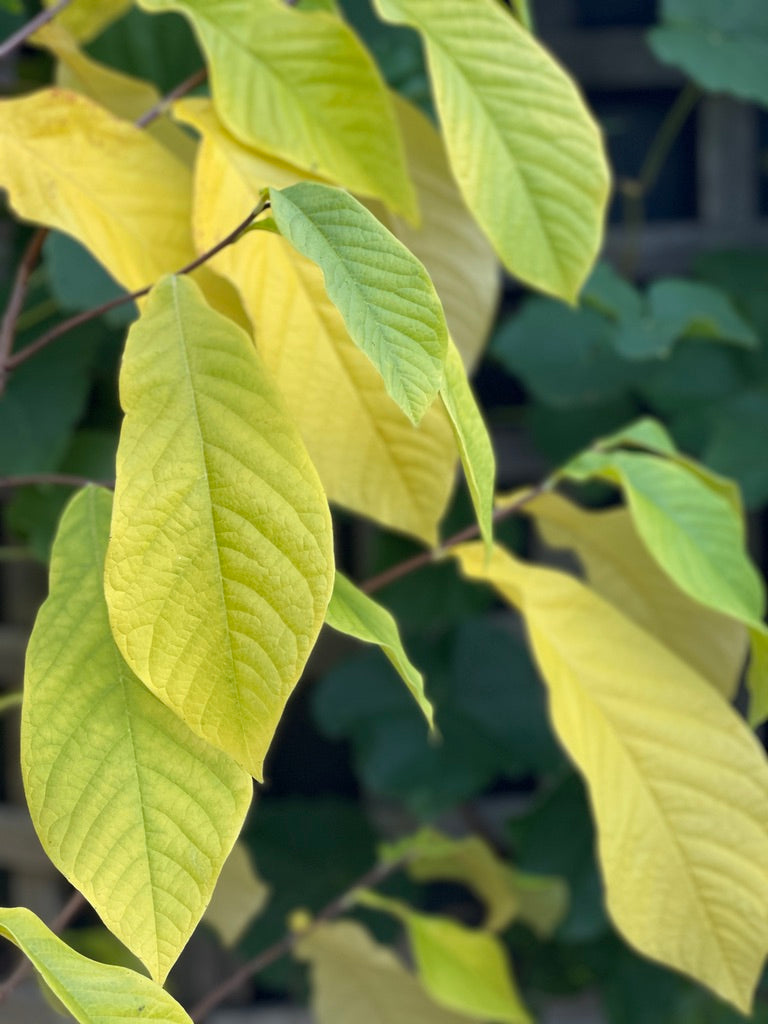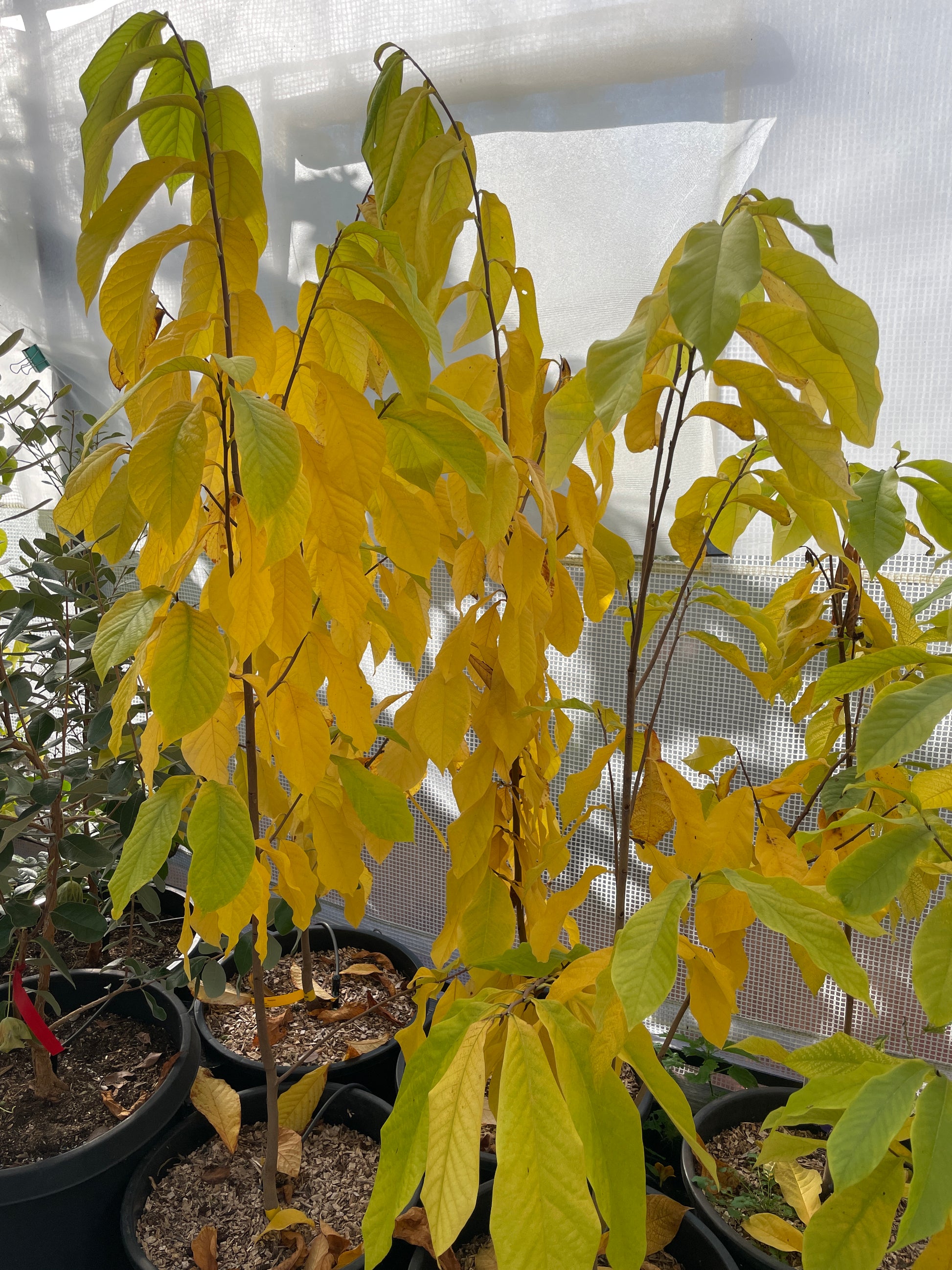West Coast Plants
'Shenandoah' Pawpaw
'Shenandoah' Pawpaw
Couldn't load pickup availability
Shenandoah Pawpaw (Asimina triloba 'Shenandoah') is a premium, early-ripening variety from renowned pawpaw breeder Neal Peterson. Shenandoah produces large, smooth-fleshed fruit with very few seeds and a rich, custardy sweetness reminiscent of banana and mango. Reliable in coastal B.C., it ripens from late September to early October and bears heavy crops even on young trees. Perfect for small orchards or home gardeners looking for top-tier flavour and productivity.
In Blake Cothron's book, Pawpaws, in which he rates over 165 cultivars, he rates Shenandoah with an A+, noting the fruit's sweet, tropical, banana flavour and custardy texture. He also notes this variety is one of the best suited for commercial production and is a "superior variety all around."
WHAT ARE PAWPAW TREES?
Pawpaws are highly prized fruit trees. Often called a “tropical fruit for the north,” pawpaws produce clusters of large, nutritious fruit 3–6 inches long with a custard-like texture and a flavour that’s been compared to mango, banana, pineapple, and even vanilla custard.
Unlike most tropical relatives in the custard apple family, pawpaws are uniquely cold-hardy (-25ºC), thriving in Zones 5–8 and capable of handling Canadian winters in many regions. Pawpaws are native to North American, including areas as far north as southern Ontario.
In nature, young pawpaw trees grow in the dappled shade of forest understories, gradually reaching into more sunlight as they mature. To mimic this, it’s best to provide shade for the tree's first 1-2 years—whether by planting behind a fence, under light tree cover, or using a temporary shade screen.
Most pawpaws require cross-pollination with a different pawpaw cultivar, or a seed-grown pawpaw. Seed-grown pawpaws are all genetically unique, so you can have two seedlings pollinate each other, or one seedling and one cultivar, or two cultivars. Named cultivars are grafted and selected for their exceptional fruit quality and yield. With seed-grown pawpaws, fruit quality can vary widely.
With an ever-expanding, cult-like following, pawpaws reward growers with one of the rarest and most delicious fruits you can grow in a northern garden.
Common names: Shenandoah Pawpaw, Shenandoah Paw Paw
Edible: Fruit
Harvest timing: Mid season (Late-September - early October)
Scientific name: Asimina triloba 'Shenandoah'
Light requirements: Shade the first 1-2 years, full sun (6+ hours) the rest of its life.
Full-grown size: 12-15' tall, with a natural pyramidal shape requiring very little pruning.
Hardiness: Zone 5
Pollination: Requires cross-pollination with a different pawpaw variety/cultivar or a seed-grown pawpaw.
Wildlife: Deer resistant leaves; fruit is attractive to wildlife.
Origin: Native to eastern North America. Cultivar bred by Neil Peterson in West Virginia, USA and released in early 2000s.
Noteworthy: You will probably never taste one unless you grow one! The fruit bruises easily so they are not shipped to grocery stores.
Share
